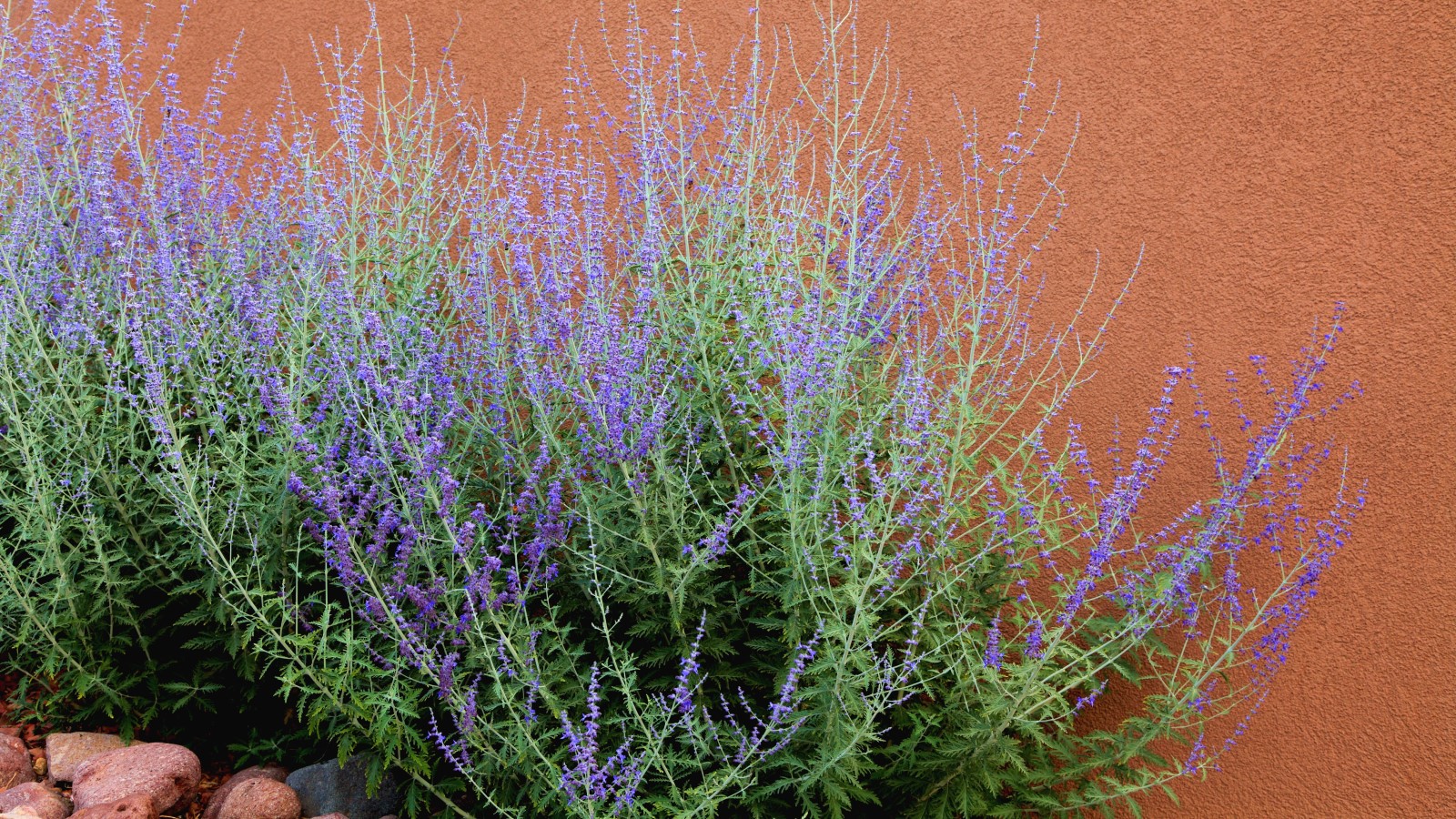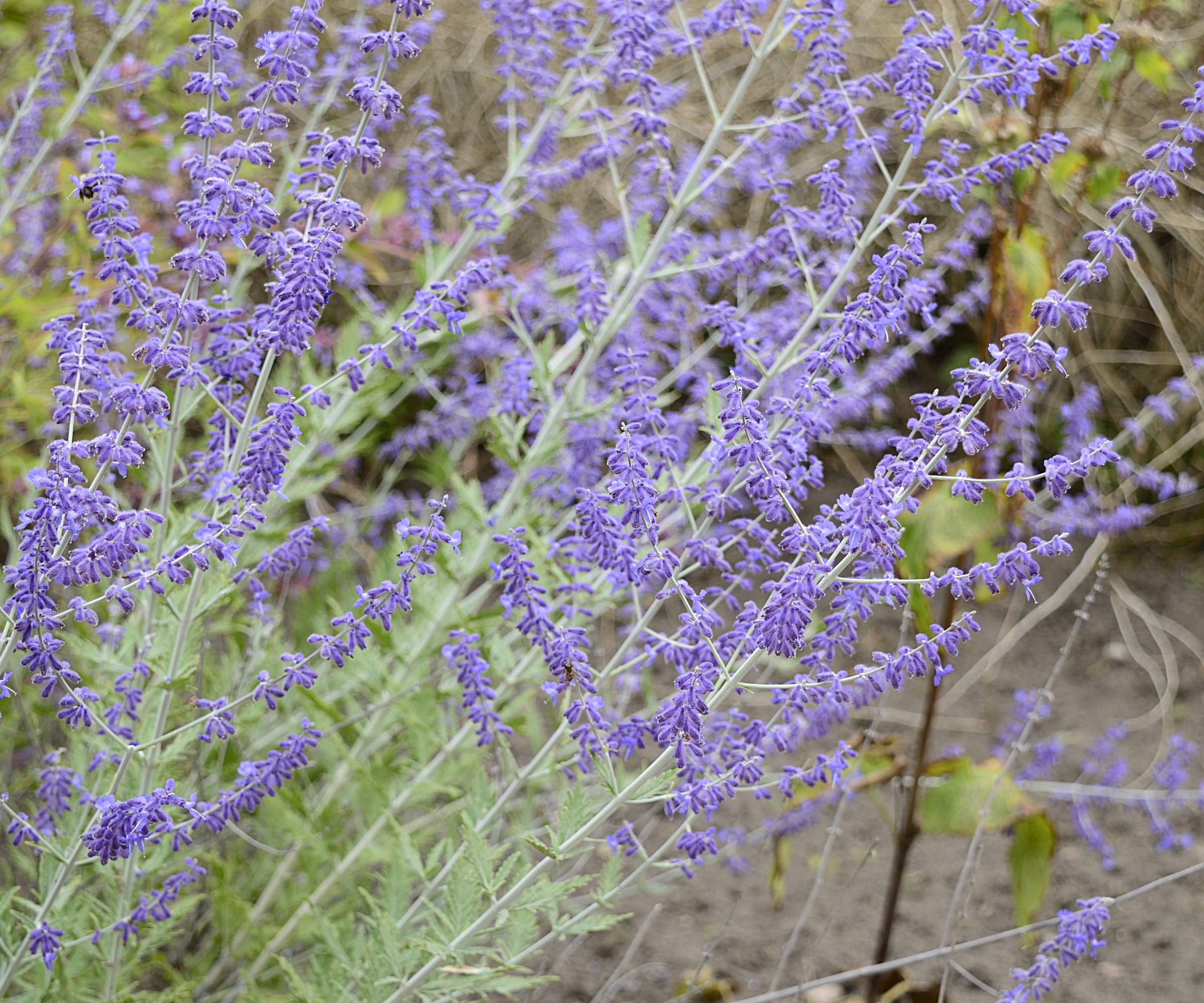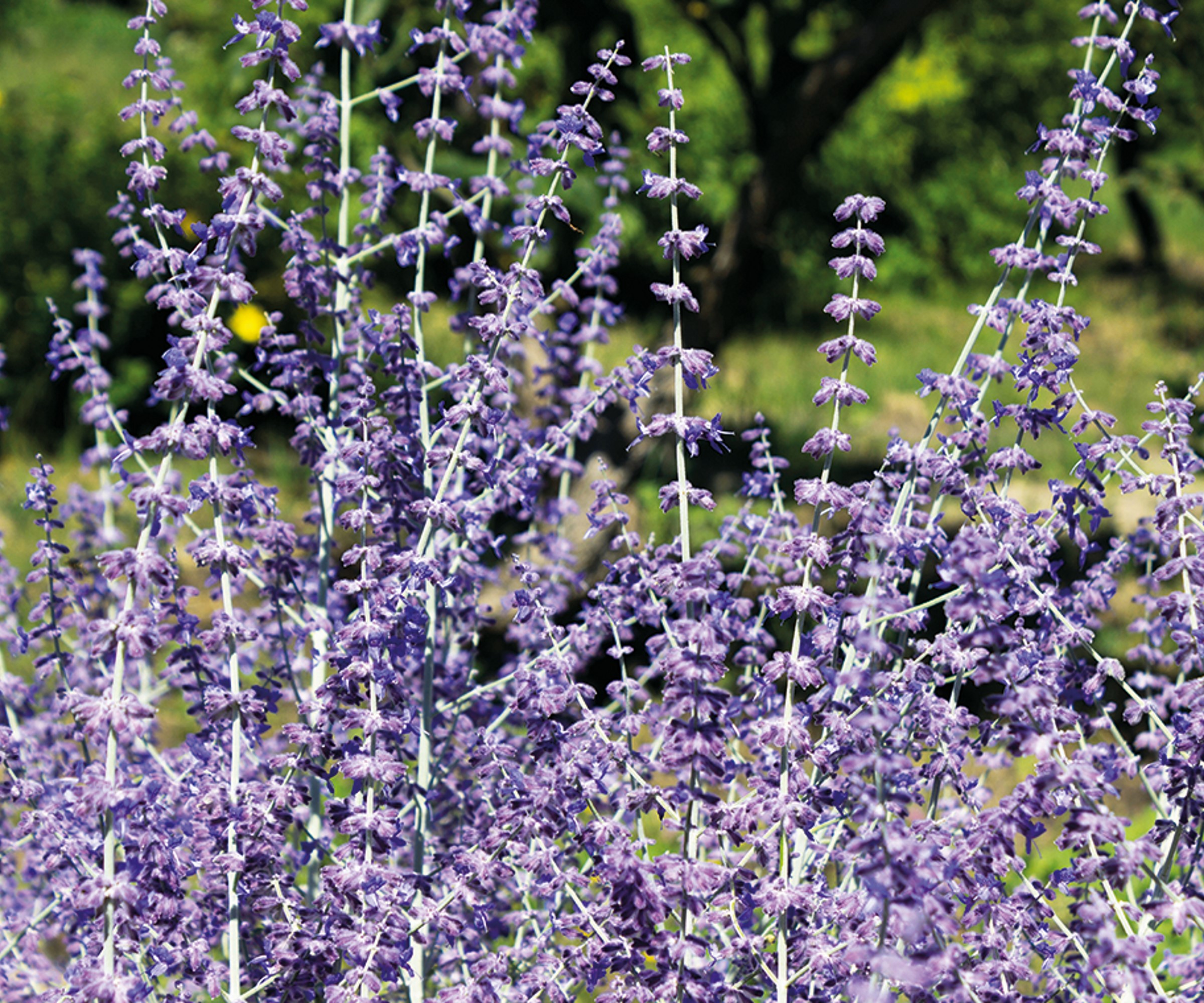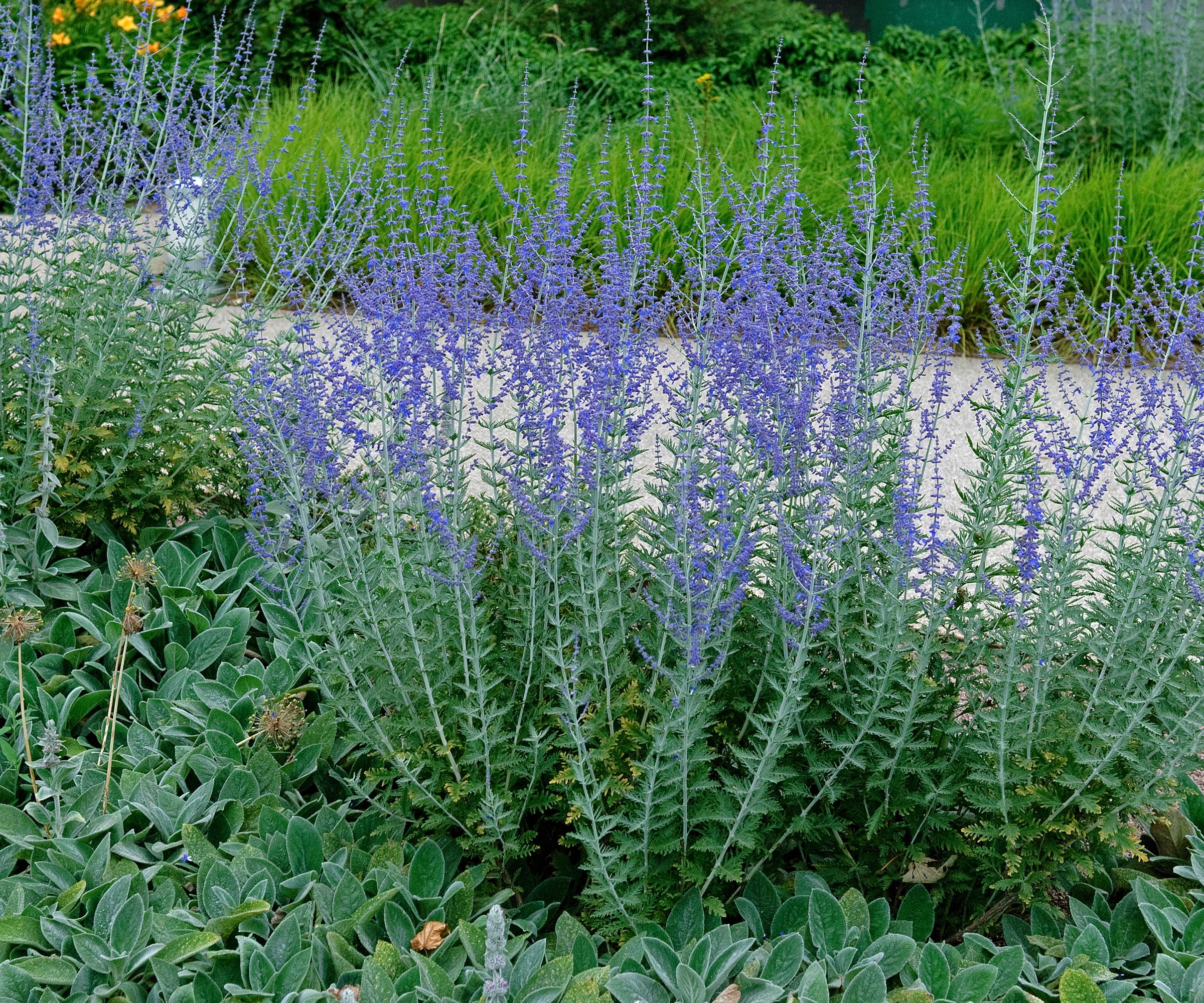When to cut back Russian sage – how to decide whether to prune in fall or spring
Learn the benefits of both options so you can choose when to cut back this hardy perennial


Russian sage is a great perennial plant that is loved by bees and other insects. A fantastic drought tolerant shrub, Russian sage produces an abundance of branching purple stems come late summer and early fall.
Reaching up to five feet in height, Russian sage benefits from being pruned annually to keep the plant compact, full of productive growth, and blooming at its best.
There are two options for the best time to cut back Russian sage. The task can either be done in fall or spring. It may depend on your location, as well as your gardening goals, as to when you decide to complete the task.

The flowers of Russian sage are a magnet for bees and other pollinators
When should I cut back Russian sage?
Russian sage is a great option for any drought tolerant planting ideas or if you want to try xeriscaping as part of your backyard ideas. But you may wonder, when do you cut back Russian sage? It can be done in fall or spring, so we take a closer look at the advantages of both to help you decide when to prune your Russian sage.

Russian sage has highly aromatic flowers
Cutting back Russian sage in spring
Most gardeners will choose to prune their Russian sage in mid-to-late spring to maintain the shape and encourage a great flush of new flowers come late summer. If you want to cut back Russian sage in spring, then the best time to do it is when the new growth begins to appear. At this stage, you can cut old stems back to the lowest set of leaves.
Reese L. Robbins from Just Pure Gardening says that this spring pruning will encourage new growth, control the shape and size of the plant, and ensure you get lots of fantastic blooms each season. He says: ‘Spring pruning allows you to make precise cuts without harming the new tender shoots. It also gives the plant enough time to recover and prepare for a bountiful display of flowers later in the year.’
Another reason to not go out with the pruning shears until spring, rather than heading out to cut back Russian sage in fall, is that the stems can offer beauty in a winter garden. The dried stems of Russian sage, along with many other plants, can provide real visual interest if you are planning a winter garden.
Tina Ho, the founder of Good Plant Care, explains: ‘The stems and seed heads provide winter interest in the garden, adding texture and a delicate, frosted appearance after snowfalls. Waiting till spring also benefits local wildlife, as the seeds serve as a food source for birds during the colder months.’
As well as being beneficial as part of a wildlife garden, the uncut stems are also able to help to insulate the crown of the plant from the worst of the winter weather.

Tina Ho is the co-founder & editor of GoodPlantCare.com. She got her first Philodendron in 2020 and quickly fell in love with the green foliage. Her house is now filled with more than 100 houseplants, mostly aroids (Philodendrons, Alocasia, Anthurium) and Sansevieria.

It is common to cut back old stems when new growth appears in Spring
Cutting back Russian sage in fall
There are some gardeners who will choose to cut back Russian sage in the fall and there are several merits to doing this.
People living in colder US hardiness zones may choose to prune before the worst of winter arrives as, by removing the stems, you can protect the plant from heavy snow and ice damage and also reduce the risk of breakages. Pruning the plant back to 6-12 inches in height can protect the otherwise exposed stems from being damaged by the worst of the winter weather.
Lots of gardeners will have tidying their flower beds and borders ahead of winter on their fall gardening checklist. Cutting back Russian sage in fall will boost the aesthetics of the plant and make it look neat and tidier.
Jamie Rae from Green Garden Cottage advises that it is important to make sure the plant is dormant before pruning Russian sage. She warns: ‘If you prune before the plant is dormant, it may stimulate growth right before a hard frost sets in’.
Any fresh growth caused by making the mistake of pruning too early will be killed by the frosts and any heavy pruning done at this time could impact the overall hardiness of the plant.

Reese L. Robbins is the founder of Just Pure Gardening, a site full of fruit and vegetable growing guides, garden ideas, and garden product reviews.
FAQs
Should Russian sage be cut back every year?
It is recommended to prune Russian sage every year to keep the plant compact and encourage a flush of strong new growth to carry the flowers. Cutting back Russian sage will help to keep the plant bushier and full of newer growth, rather than old and woody stems. This will be beneficial in making sure the plant is healthy and blooms at its best every summer.
Can I cut back Russian sage in summer?
Rather than any large-scale pruning, Russian sage can be lightly clipped during the summer to shape the shrub. It does grow quickly during the summer months and could potentially become floppy, so gentle trimming can help to keep it compact and reduce the height. Any dead, damaged, or diseased stems can also be pruned out of the plant during summer.
Russian sage is a fantastic plant that attracts bees, butterflies, and other pollinators to its lavender-like purple blooms in summer and fall. It is a fuss-free plant that can work in a wide range of locations, providing it gets lots of sun and a soil type that is well-draining. See the full range of Russian sage plants available at Nature Hills.
Sign up to the Homes & Gardens newsletter
Design expertise in your inbox – from inspiring decorating ideas and beautiful celebrity homes to practical gardening advice and shopping round-ups.

Drew’s passion for gardening started with growing vegetables and salad in raised beds in a small urban terrace garden. He has worked as a professional gardener in historic gardens and specialises in growing vegetables, fruit, herbs, and cut flowers as a kitchen gardener. That passion for growing extends to being an allotmenteer, garden blogger, and producing how-to gardening guides for websites. Drew was shortlisted for the New Talent of the Year award at the 2023 Garden Media Guild Awards.
-
 Martha Stewart's tips for arranging daffodils are unbelievably simple and effective – it's the only flower advice you need this springtime
Martha Stewart's tips for arranging daffodils are unbelievably simple and effective – it's the only flower advice you need this springtimeMartha shows us that we can create gorgeous bouquets of this seasonal flower by simply trimming the stems and placing them in specific vases
By Hannah Ziegler Published
-
 Designers share how to make your outdoor living room look more expensive – and the affordable products to get you there
Designers share how to make your outdoor living room look more expensive – and the affordable products to get you thereFrom layered lighting to luxe-looking textiles, these simple swaps made all the difference
By Charlotte Olby Published